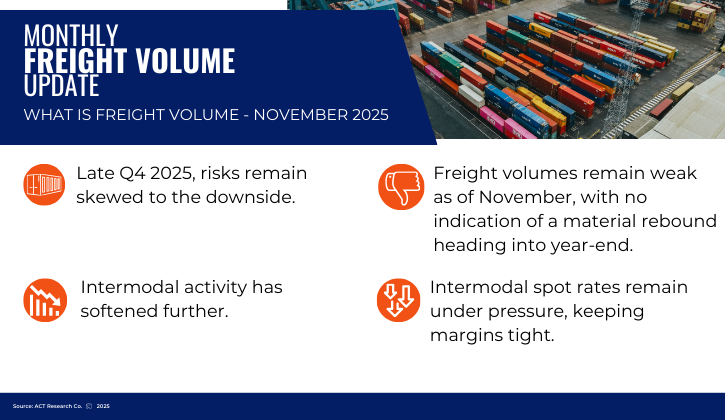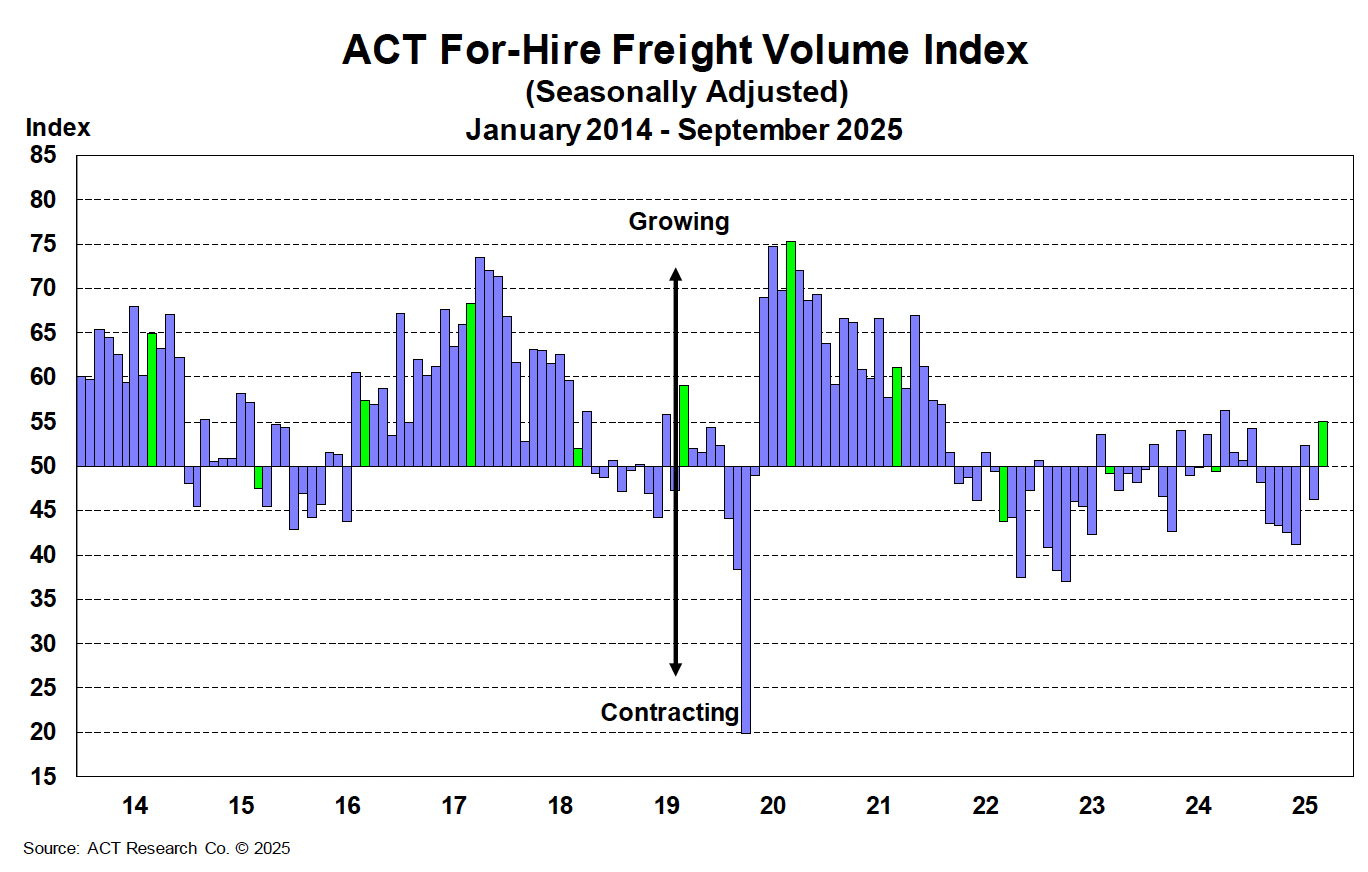
Booming economic activity results in more freight needing hauled. Freight volume refers to the amount of goods, import and export, moving through the transportation industry. Almost every physical product made or sold in the U.S. economy moves through the commercial vehicle (CV) market.
Why Is Freight Volume Important?
No matter the economic environment, having an understanding of market trends is extremely valuable for companies to be able to respond to challenges and opportunities.
Shippers own or supply the goods (freight) that carriers will transport, and brokers act as the middle man between them; thus, the amount of freight moving among these players will impact how they conduct their business. Businesses benefit from having accurate information related to freight volume so they can better plan for the road ahead.
An effective way to think about supply and demand in the truckload (TL) market is the concept of a pendulum. When demand grows faster than capacity and the supply of drivers or tractors is short, the pendulum swings to the fleets and freight rates rise. When supply growth outpaces demand growth, the pendulum swings to the shipper and freight rates fall. Trying to match long-term businesses with short-term fluctuations in freight demand is cyclical.
How is Freight Volume Measured?
For any company, the scope of internal data can be limiting and unfortunately, the cost of gathering broader market analysis can be prohibitive. As a solution, ACT Research gathers information on a confidential basis from a wide variety of TL carriers, especially the small and mid-size TL carriers that haul a major portion of freight in the North American market. The elements of information include:
- business volume trends,
- market price trends, and
- expectations for vehicle sales and purchases.
The ACT For-Hire Trucking Index surveys carriers to help paint a comprehensive picture of trends in transportation and CV markets.
Additionally, ACT Research partners with Cass Information Systems, Inc., the nation’s largest processor of freight billing, to gain insight on current market trends and the state of the shipping sector. ACT uses the Cass Freight Index®, which measures freight volumes and expenditures, and the Truckload Linehaul Index®, a pricing indicator, to forecast freight demand.
What is ACT saying right now about freight volume?
Updated Freight Volume Overview – November 2025
Freight volumes remain weak as of November, with no indication of a material rebound heading into year-end. The temporary lift from pre-tariff shipping has now fully unwound, and the market has settled back into a soft, payback-driven environment. According to the latest ACT data, for-hire volumes remain essentially flat, with activity showing little movement for several months. The overall freight market continues to struggle against excess capacity, limited pricing power, and muted demand across nearly all major segments.
Retail-oriented freight is still the largest drag on recovery. Consumer spending has cooled, weighed down by borrowing costs, tariff-related inflation, and shifting household priorities. Retailers are maintaining lean inventories and shorter restocking cycles, keeping replenishment-driven freight subdued. While e-commerce volumes continue to outperform traditional retail channels, they have not been strong enough to offset weakness in general merchandise and large-format durable goods.
Intermodal activity has softened further. The reversal of pre-tariff import demand is now flowing through containerized volumes, which have shown renewed declines into the fall. Rail service metrics continue to improve, and port congestion is no longer a constraint, but aggressive truckload pricing and ample capacity have limited modal shifts. Intermodal spot rates remain under pressure, keeping margins tight and reducing near-term incentives for conversion from highway to rail.
Industrial-oriented freight also remains under strain. Manufacturing output has flattened again, and factory orders continue to trend lower, limiting freight tied to machinery, components, and industrial inputs. Construction-related activity remains mixed: public-sector infrastructure freight is steady, supported by ongoing federal investment, while private residential and commercial moves continue to lag. Energy-related freight has softened as well, influenced by policy uncertainty, uneven equipment investment, and slower drilling activity.
Looking into late Q4 2025, risks remain skewed to the downside. ACT Research does not expect a traditional holiday peak, with consumers remaining selective and inventories already positioned conservatively. Carriers continue to emphasize cost discipline and operational flexibility, relying on shorter bid cycles and tighter network planning to manage volatility. With pre-tariff paybacks still in motion and freight demand likely to remain uneven through the winter, overall volumes are expected to stay stagnant into early 2026, with the earliest potential stabilization not likely until seasonal improvements in the spring.

Freight Volume Forecasting
When forecasting the truckload and less-than-truckload markets, ACT Research utilizes two primary metrics to measure industry volumes (demand):
In short, both measure consumer demand that drives the shipping of goods by a carrier. In other words, measurements of the volume of freight hauled.
Cass Freight Index®- Shipments measures the number of freight shipments hauled within North America by Cass Information Systems. Cass processes more than $44 billion in freight transactions annually and is the ideal source for measuring shipper volumes.
ACT Freight Composite Index is a measure of the estimated total freight hauled by sector as developed by ACT Research.
These two demand metrics provide insights into the expected volumes of freight shipped over the next 6-36 months, providing a supply-demand balance when utilized with ACT's capacity (supply) metrics.
To see how freight volume is likely to change in the future, and for detailed analysis and forecasts for truckload, less-than-truckload, and intermodal, see ACT's freight & transportation forecast.